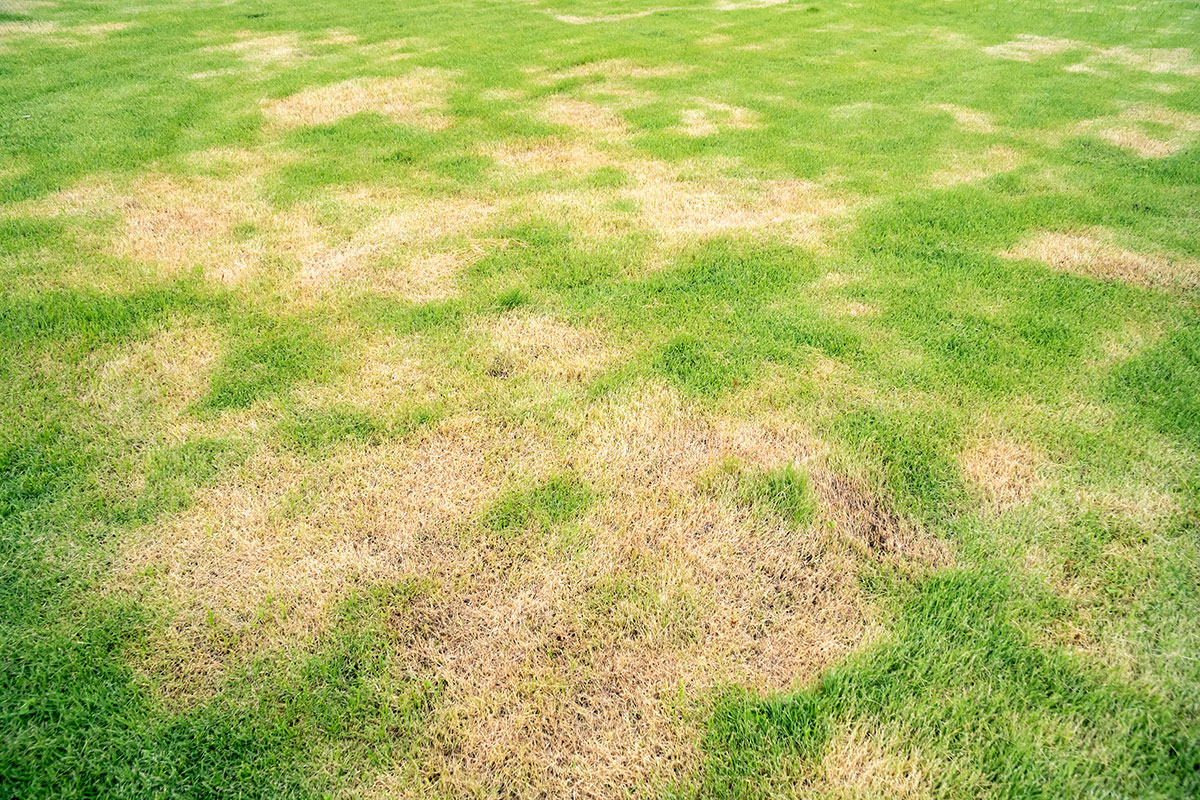Your beautiful lawn, which was green a few days ago, has turned yellow and is drying out in patches (or completely)? What is going on?
There are several reasons for a drastic change in the condition of your lawn. The damage can become significant very quickly if nothing is done to correct the situation. In order to know how to care for your lawn so that it regains its health, it is essential to make the right diagnosis and to know what caused the damage to your property. Our experts will try to give you some solutions.
A small, circular yellow patch of a few centimeters appeared, and the next day it tripled. What’s going on?
If the weather has been dry and hot for a few days, or even a few weeks, and your lawn is in direct sunlight, move the yellowed grass aside and you will most likely see small black or red insects. You have a chinch bug infestation! This small biting insect, which is not dangerous to humans and animals, feeds on the sap of the grass, leaving it for dead. You must act quickly, as the chinch bugs reproduce at a rapid rate. Treat your lawn with an insecticidal soap found in garden centres. You will then have to repair the damaged patches of grass at the appropriate time.
My grass is yellow and dry, straw like, over most of the surface. Is it dead?
The heat and lack of water in the hot summer months are hard on the lawn. When it suffers from thirst, it goes into a state of protection and concentrates all its resources to its roots, at the expense of the aerial part. This is called dormancy. The lawn may look dead, but it will green up again when the weather is warmer and it rains. Avoid trampling as much as possible and do not mow during this period. If your municipal bylaws allow it, you can water once a week, in depth.
My grass has yellow patches and it pulls easily when pulled, like a carpet. What could it be?
If your lawn is also visited by skunks and other pests looking for food, it’s quite possible that white grubs have taken up residency in your lawn. You can apply nematodes, a microscopic worm, parasite of the white grubs, that can be found in store. A new granular product also works well. In either case, water thoroughly to get the product into the soil. Ask your garden centre specialist for information on how to do this correctly, at the right time.
There are several other reasons for why yellow patches may appear on your lawn: frost damage, fungal disease, your pets, etc. Make sure you identify the cause to apply the right treatment.
Prevention: your best tool
A healthy, dense and strong lawn is better able to fight off the aggressions it can suffer. Take good care of your lawn to improve your chances of keeping it beautiful all year long:
- Fertilize at different times of the year to provide the right nutrients
- Repair damaged areas by adding seed or sod
- Raise your mower blades to 8 cm and sharpen them well
- Topdress and overseed in the spring or fall… or both!
If you are unsure of how to take care of your lawn, come and discuss it with us or contact a company specialized in lawn care.






